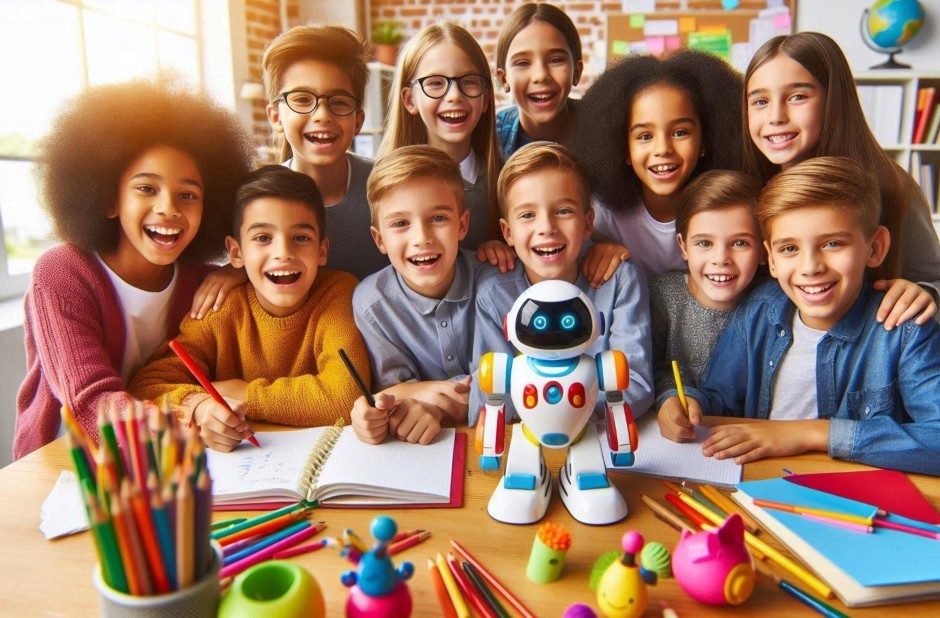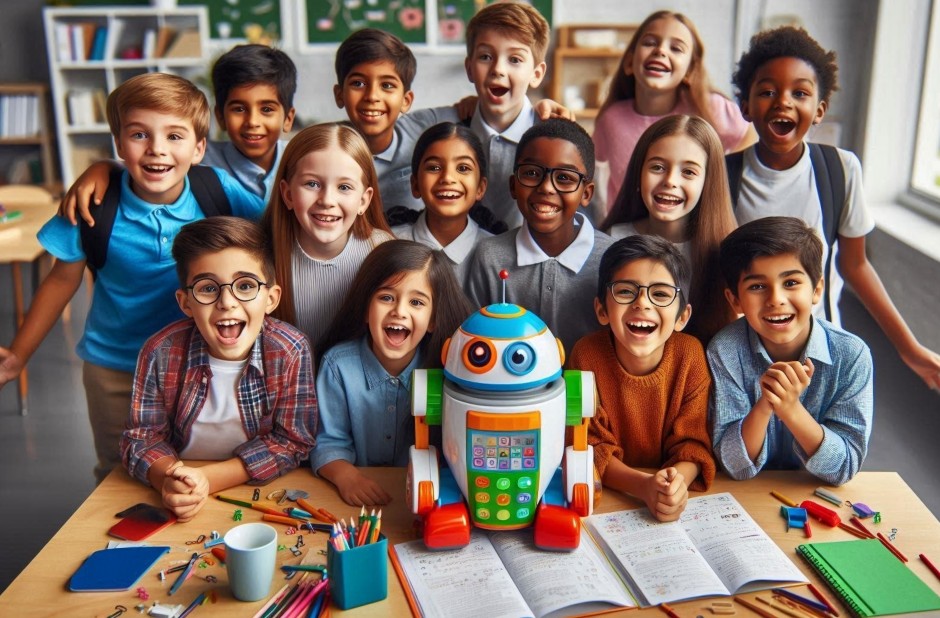In recent years, there has been a significant advancement in the field of Artificial Intelligence (AI) and Augmented Reality (AR). These technologies have become increasingly popular and have the potential to enhance virtual experiences in various fields such as gaming, education, healthcare, and...
Schoolchildren Created a Robot That Does Homework

In an impressive display of innovation and technical prowess, a team of five middle school students from Westlake Science Academy has developed a functional robot capable of completing homework assignments. The project, which began as a science fair entry, has evolved into a sophisticated educational tool that has captured the attention of educators and technology experts alike.
The Young Innovators Behind the Project
Led by 13-year-old programming prodigy Emma Chen, the team consists of students ranging from ages 12 to 14, each bringing unique skills to the collaborative effort. Chen, alongside classmates Marcus Washington, Sophia Patel, Diego Rodriguez, and Aisha Kwon, spent over six months designing, programming, and refining their creation.
"We wanted to create something that would help students learn, not just do the work for them," explained Chen during a demonstration at the Regional Technology Showcase. "Our robot is designed to show the steps and explain concepts, not just provide answers."
How the Homework Robot Functions
The robot, affectionately named "HomeworkHelper," utilizes a combination of machine learning algorithms, computer vision, and natural language processing to tackle assignments across multiple subjects. The compact device, roughly the size of a small microwave, contains a scanner for reading worksheets, a touchscreen interface, and a mechanical arm for writing solutions on paper.
Technical Specifications
HomeworkHelper's impressive capabilities include:
- Optical character recognition to read and interpret questions
- Subject-specific knowledge databases for mathematics, science, language arts, and history
- Natural language generation to create written responses and explanations
- Step-by-step solution display with voice narration
- Handwriting replication that mimics the student's own style
The robot operates on a custom operating system developed by the team, with safeguards in place to ensure it serves as a learning aid rather than a tool for academic dishonesty.
Educational Philosophy
What distinguishes HomeworkHelper from similar technologies is its educational approach. Rather than simply providing answers, the robot guides students through the problem-solving process, offering explanations and asking clarifying questions to ensure understanding.
"We programmed it to recognize when a student might be struggling with a concept and to provide additional resources or simpler explanations," said Sophia Patel, who focused on the educational programming aspects of the project. "It's designed to adapt to different learning styles."

Controversy and Educational Impact
The creation has sparked debate among educators about the role of technology in education. Some express concern that such devices could undermine traditional learning methods and enable cheating, while others see potential for personalized tutoring that addresses individual student needs.
Dr. Rebecca Martinez, an educational technology researcher at the local university, sees merit in the project: "What these students have created demonstrates a sophisticated understanding of both technology and pedagogy. The emphasis on explanation rather than mere answer provision addresses many concerns about AI in education."
School Response
The school administration has been supportive but cautious. Principal David Johnson commented, "We're incredibly proud of what these students have accomplished. They've demonstrated exceptional STEM skills and a thoughtful approach to educational challenges. However, we're working with them to establish appropriate guidelines for the technology's use."
Future Development Plans
The young inventors aren't resting on their laurels. They've already outlined plans for HomeworkHelper 2.0, which will include:
- Enhanced subject coverage, including foreign languages and advanced sciences
- Integration with online learning platforms and digital textbooks
- A more sophisticated assessment system to identify knowledge gaps
- Improved accessibility features for students with disabilities
The team has been approached by several educational technology companies interested in developing their concept further, though the students and their parents are carefully considering these opportunities.
Conclusion
The HomeworkHelper robot represents more than just a clever science project; it exemplifies how today's tech-savvy generation approaches learning and problem-solving. By creating a tool that emphasizes educational support rather than shortcut-taking, these five middle schoolers have contributed meaningfully to the ongoing conversation about technology's role in education.
As Washington remarked during their presentation, "We didn't just want to build something cool; we wanted to build something helpful. Learning should be exciting and accessible for everyone, and sometimes technology can help make that happen."
Whether or not HomeworkHelper ultimately finds its way into classrooms, the innovation, teamwork, and thoughtful approach demonstrated by these young inventors suggests a bright future for both the students themselves and for educational technology.



